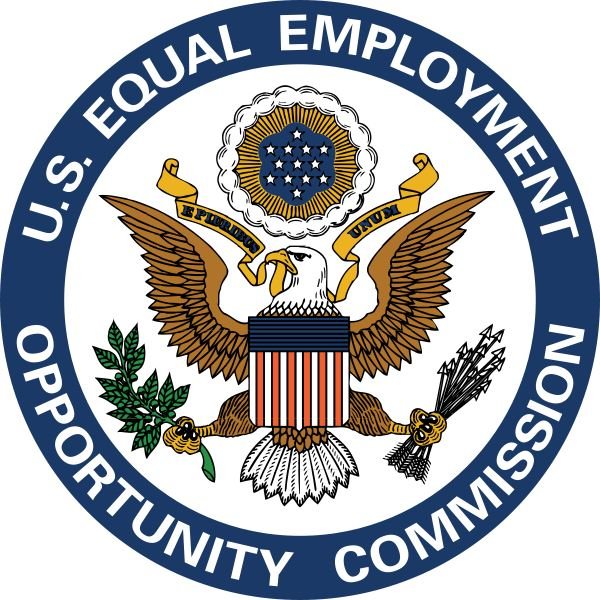Prohibited Harassment – The Employer’s Liability for a Hostile Workplace Environment
What Constitute Unlawful Aggression?
Employers should know that harassment is more than just about discriminatory or sexually offensive acts. Human resource managers as well should be aware that acts of aggravation or hostility that create an unwelcoming atmosphere are likewise regarded as unlawful. Such acts might be considered severe and prejudicial to a worker’s ability to carryout his or her duties.
The Equal Employment Opportunity Commission (EEOC) emphasizes that employment laws protect the rights of every employee against prohibited aggressions, like:
-
Verbal assault and visual conduct using profane or offensive expressions that are frequently directed to an employee.
-
Habitual utterances of invectives, insults, slurs or any form of derogatory language by an employer or manager-supervisor, by a co-worker or even by a customer to a staff or worker, as it undermines the productivity in a workplace.
-
Sexual innuendos uttered by co-workers or supervisors, specifically directed to an employee, which clearly manifest intentions to make advances, solicit sexual favors, or impose sexual gratification.
-
Acts of bullying, intimidation, physical assault and threats, which render the workplace unbearable enough to cause stress, lessen one’s interest to report for work or goad an employee to resign.
These are only some examples of negative behaviors against which an employee has the right to complain, regardless if he or she is the direct recipient of the untoward and unlawful act.
The EEOC’s Position

The EEOC holds the employer responsible for maintaining a workplace environment that is free of hostile or derogatory acts. The extent of the employer’s liability includes the illegal actions of supervisory or non-supervisory employees and of non-employees doing business with the business entity. Employers who have knowledge of any untoward behaviors regarded as illegal aggression but fail to address them as problems that require immediate and corrective actions shall be held liable.
The mere institution of policies against harassment does not absolve the company from liabilities that stem from a complaint filed by the employee. The business owner or the HR manager who acts on behalf of the employer must show proof that:
-
The employer immediately addressed the problem to give remedy and enforced the related policies.
-
The complaining employee deliberately avoided or declined to aid in the implementation of the company’s related policies or refused to cooperate in ameliorating the situation based on unreasonable or unfair interpretations.
However, the EEOC looks into complaints about unlawful harassment by reviewing and evaluating the entire context of the allegations. The aim is to ascertain the employer’s earnest intentions to keep the workplace free from discriminatory and hostile acts.
The Responsibility of the Employer in Preventing or Avoiding Acts of Prohibited Aggressions

The EEOC regards acts of prevention as the best methods by which unlawful aggressions are handled. It is important, however, that the policies are adequate and properly explained and disseminated to the employees. Moreover, said policies should serve as guidelines for conducting an investigation as the initial step in addressing any allegations of unjust treatments. Investigations should proceed without waiting for an employee to file a formal complaint, in order to curtail or mitigate further repercussions.
(1) Actions to prevent occurrences and recurrences do not stop with applying the prescribed sanctions or punishments but should include training initiatives regarding human rights and any known violations. In addition, the offender should manifest his or her remorse by apologizing to the aggrieved employee.
(2) Policies, to be effective, should also be formulated and discussed with employees, as a means to discourage those who have certain tendencies to commit grave offenses, whether intentionally or unintentionally. Making known the company’s stance against workplace aggression and by emphasizing the written policies on how offenders are dealt with will serve as deterrents.
(3) On the other hand, employees will feel more at ease working in an environment where they are assured of protection against unfair management. Circulating newsletters, memos or pamphlets about case study samples that depict what constitutes prohibited harassment will help each and every employee understand the seriousness of the problem and the necessary steps to take.
(4) Displays of anti-harassment posters, which contain information about the appropriate office or department at which the matter is to be reported, will help keep the environment free from bias, prejudice and hostility.
(5) Critical training and orientation during on-boarding periods must include clear explanations on what is regarded as unlawful treatment.
(6) The employer should show genuine sincerity by applying the policy unequivocally to all concerned, regardless of the rank or stature of the offender.
(7) The ultimate test of genuine intent to keep a healthy working environment is the swiftness of the company’s response and actions for all complaints of harassments and discrimination.
Employees’ Initiatives to Keep the Workplace Free from Bias and Aggression

Employees should also be aware that acceptability of behavior is of utmost importance in interacting not only in the workplace but in a society as well. It eliminates discord and instead promotes harmony among members. However, not everyone is well aware that a particular behavior becomes unlawfully harassing even if that has not been the actual intention.
Employees therefore should be encouraged to take the initiative in discerning situations, responses and behaviors by:
(a) Not making a general assumption that everyone understands that sharing an off-color remark or a dirty-joke read from somewhere or heard from a stand-up comedian is intended only as a jest.
(b) Taking negative responses to mean what they intend to mean, whether expressed verbally or by means of bodily movements.
(c) Analyzing one’s own reactions if the scenario was different — instead of being the giver, one becomes the recipient of the derogatory remark or if one’s own mother, wife, sister or daughter was the recipient of a sexual innuendo.
(d) Paying heed to warnings about one’s proneness to uttering invectives, or dropping derogatory remarks to subordinates or co-workers, particularly during discussions or deliberations.
(e) Refraining from repeating an infraction in violation of the company’s policies for proper code of conduct after one has already been made aware of it.
(f) Apologizing for an off-hand remark or comment, which a subordinate or co-worker has pointed out as uncalled for.
The Role of the State in Upholding the Employee’s Rights
The federal government, through the EEOC, merely encourages employers to conduct harassment-prevention training laws for its supervisors and employees. However, several U.S. states have specific statutory laws in place that require employers to include harassment education and training as part of the business entity’s hiring program.
The state of California, for example, requires employers with 50 or more employees to provide at least two hours of training and education to their supervisors regarding sexual and other forms of prohibited harassment.
The state of Maine requires the same education and training from employers with 15 or more employees for all new employees, including those classified as contractors.
The State of New Hampshire requires the posting of educational posters which carries the state’s stance against sexual harassment, as the posters contain guidelines for employees in bringing forward their complaints.
All other U.S. states have similar requirements as the EEOC, while the rest likewise mandate education and training against various forms of harassment. Employers may refer to the Society for Human Resource Management’s compilation of state and local statutes and regulations for “Mandatory Harassment Prevention Training” to find the applicable laws in their respective states. (See the link in the Reference section below).
Reference Materials and Image Credit Section:
References:
- U.S. EEOC. Prohibited Employment Policies/Practices – https://www.eeoc.gov/laws/practices/index.cfm
- U.S. EEOC. Enforcement Guidance on Vicarious Employer Liability for Unlawful Harassment by Supervisors —https://www.eeoc.gov/policy/docs/harassment.html
- Society for Human Resource Management. Mandatory Harassment Prevention Training —https://www.shrm.org/LegalIssues/StateandLocalResources/StateandLocalStatutesandRegulations/Documents/Trainingrequirements.pdf
Image Credits:
- By Bpenn005 at en.wikibooks / Wikimedia Commons
- A work of the United States Federal Government under the terms of Title 17, Chapter 1, Section 105 of the US Code / Wikimedia Commons
- By Asachs / Wikimedia Commons
- By Phuongtn / Wikimedia Commons
